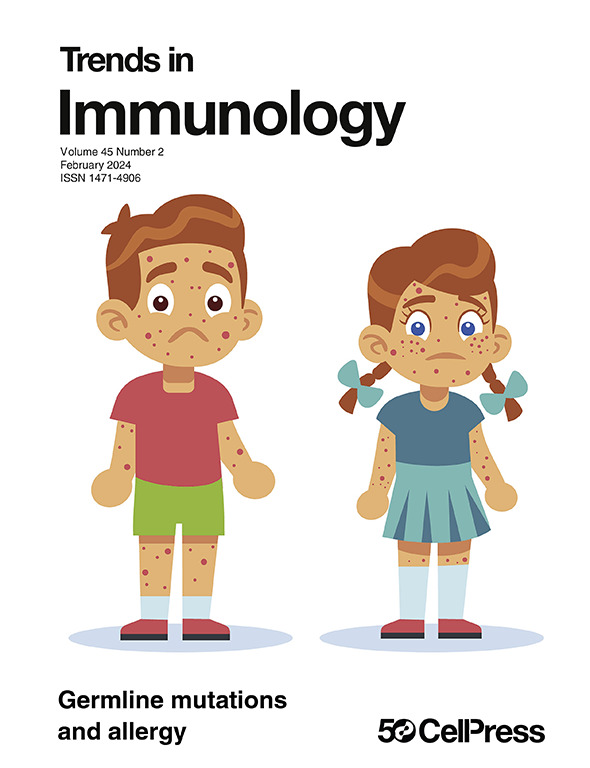脊髓损伤:T 细胞来救命?
IF 13.1
1区 医学
Q1 IMMUNOLOGY
引用次数: 0
摘要
Gao、Kim 及其同事最近报告说,在脊髓损伤(SCI)的小鼠体内可以检测到 CD4+ T 细胞克隆群。克隆的一个亚群可促进运动恢复并抑制炎症。进一步的研究可能会指向治疗 SCI 的新型细胞疗法,而目前对 SCI 的治疗仅是支持性的。本文章由计算机程序翻译,如有差异,请以英文原文为准。
Spinal cord injury: T cells to the rescue?
Gao, Kim, and colleagues recently reported that clonal populations of CD4+ T cells could be detected in mice that underwent spinal cord injury (SCI). A subset of clones mediated enhanced motor recovery and suppressed inflammation. Further studies may point towards novel cell therapies for SCI, for which care is presently supportive only.
求助全文
通过发布文献求助,成功后即可免费获取论文全文。
去求助
来源期刊

Trends in Immunology
医学-免疫学
CiteScore
25.10
自引率
0.60%
发文量
130
审稿时长
6-12 weeks
期刊介绍:
Trends in Immunology serves as a vital platform for tracking advancements across various areas of immunology, offering concise reviews and hypothesis-driven viewpoints in each issue. With additional sections providing comprehensive coverage, the journal offers a holistic view of immunology. This broad perspective makes it an invaluable resource for researchers, educators, and students, facilitating the connection between basic and clinical immunology. Recognized as one of the top monthly review journals in its field, Trends in Immunology is highly regarded by the scientific community.
 求助内容:
求助内容: 应助结果提醒方式:
应助结果提醒方式:


